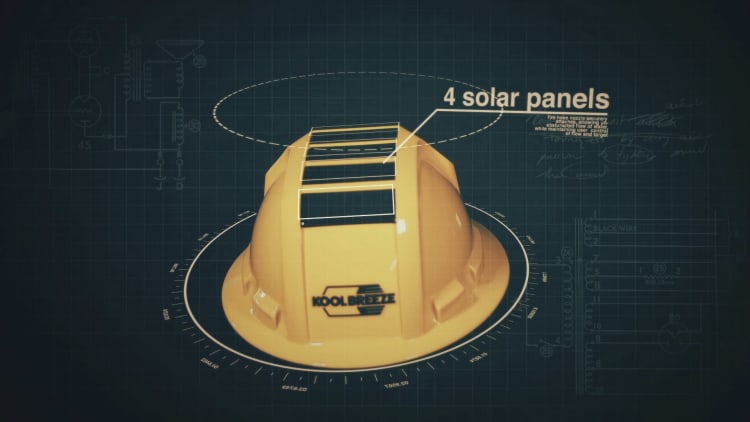It was an investment pitch that could change their lives.
Tommie and Vernice Nellon, co-owners of Fresno-based Kool Breeze Solar Hat, had already poured everything into their family business, making straw hats topped with solar-powered fans. Online sales had been steady, but there wasn't much growth.
So, to expand the brand, Tommie, a solar engineer, invented a construction hard hat version of the original design. He and his wife invested $80,000 into that line, which took them to the breaking point.
Now they're about to go face to face with an investor who is willing to give them one shot.
Fortunately, they have had Deanne Bell, co-host and advisor for CNBC's reality business show "Make Me a Millionaire Inventor" to help guide them through the process of preparing for the big moment. Because when it comes to making a perfect pitch, here's what she says you have to do before you speak one word.
NAIL THE PRODUCT
Your invention isn't going to be perfect the first time. Or the second time. Or many times after that.
Which is why testing is the key to getting your product right. That, and a willingness to change.
Whether because of arrogance or fear, too many inventors get stuck on their original idea and refuse to budge. But once opinions and feedback start rolling in, it's important to at least consider new ways of building your design.
Tommie, for example, insisted that the fans on his hats had to blow air in. He was resistant to other ideas. However, in the end, after getting personal and scientific feedback from trial and error, he finally agreed that two fans should circulate warm air out.
Having that solid data was key.
Tommie admitted, "I've learned now that it's not always my way. It's always the correct way. Whatever it takes to get there."
UNDERSTAND REGULATIONS
Depending on the market you enter, safety might be a serious concern. And your product will never see the light of day if it fails to meet certain standards.
So, before you go to far into the design phase, do your research to make sure you're complying with laws and regulations that affect your market. And prepare for that in your budget.
Every hard hat worn on a U.S. construction site has to pass standards set forth by ANSI, the American National Standards Institute. This particular test doesn't take long, about a day, but the cost can rise to $2,000. Which, depending on your finances, might be an easy hurdle, or one too high to cross.
KNOW THE MARKET
When the Nellons tested their design with real construction workers, the feedback was positive. But they also got a better idea about what a laborer is willing to pay. The responses ranged from $80 to $115.
That's key information when determining wholesale and retail prices.
Kool Breeze predicts the production cost of their helmets to be $15, landed – which is to say, the total price once it has arrived at a buyer's door. And knowing what customers are potentially willing to pay, they want to undercut even that number and sell the helmets for $60, for a 75% profit margin.
But that price is still almost $40 more than normal vented hard hats. The big question is, Will people actually shell out for something more advanced?
Of course, knowing what somebody will pay is only half the battle. The other half is knowing how many people are out there might even be interested in the first place.
Kool Breeze estimates the U.S. construction industry alone has a sales potential around $20-30 million. The Nellons believe they can corner 30% of it.
Their potential investor had his doubts and ultimately declined to invest.
Disappointing as rejection may be, it's also important to learn from the experience and, in this case, present more proof that that the big market can be taken on by small fish.


